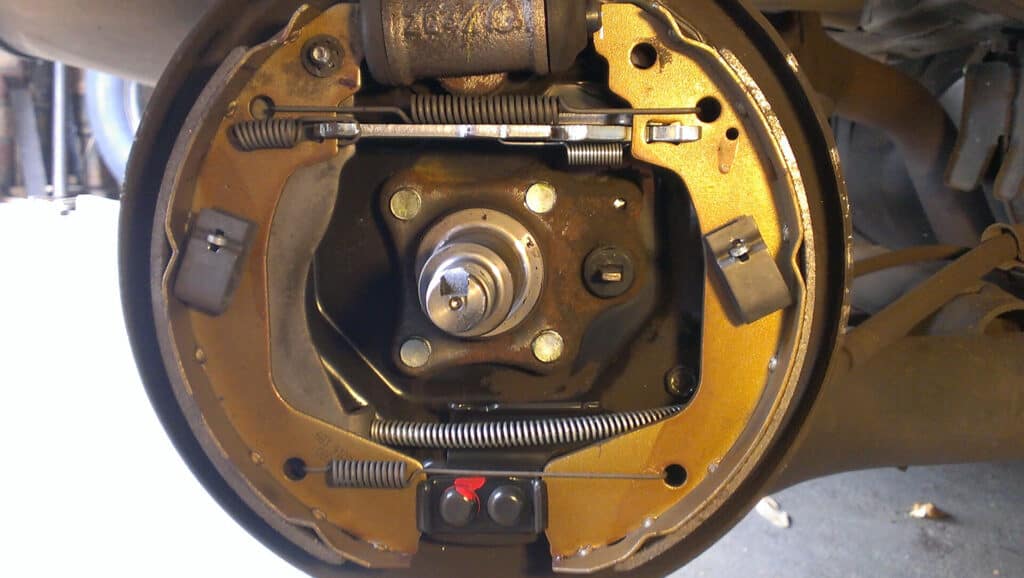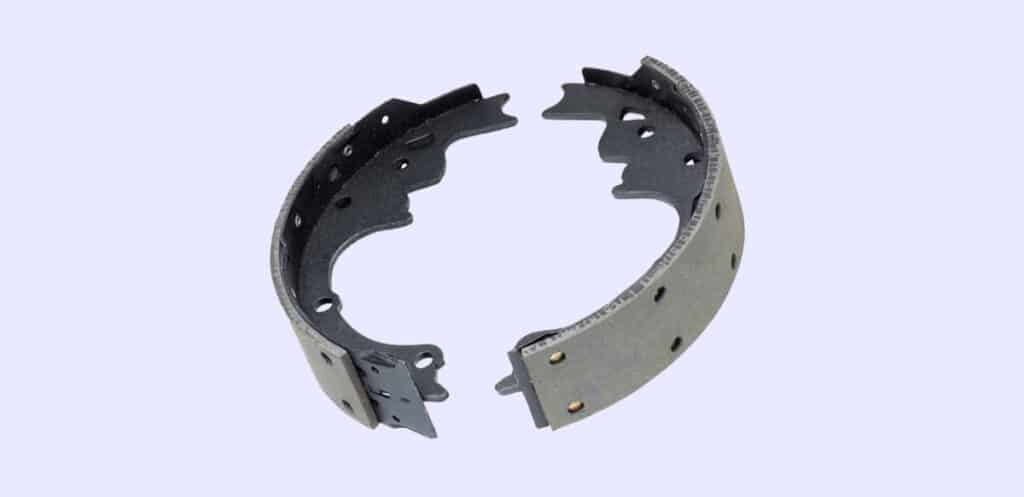Introduction: The Role of Brake Shoes in Vehicle Safety
Brake shoes play a crucial role in maintaining your vehicle’s safety on the road. They are a key component of drum brake systems, which, while less common in modern vehicles, are still found in many older cars and some rear brake applications. Ensuring that your brake shoes are in good condition is essential for optimal braking performance and preventing accidents. In this article, we’ll explore the workings of brake shoes, signs of wear, and best practices for maintenance and replacement.
Brake Shoes Explained: How They Work in Drum Brake Systems
In drum brake systems, brake shoes are curved, metal-framed components with friction material on one side. They are mounted inside a cylindrical drum, which rotates along with the wheel. When you apply the brakes, hydraulic pressure forces the brake shoes against the inner surface of the drum, creating friction that slows down the vehicle. The effectiveness of this braking process depends on the condition of both the brake shoes and the drums.

Signs of Worn-Out Brake Shoes: What to Look For
As brake shoes wear down over time, their performance decreases, potentially compromising your vehicle’s safety. It’s crucial to recognize the signs of worn-out brake shoes and address them promptly:
Squeaking or Grinding Noises
When the friction material on your brake shoes becomes thin, you may hear a high-pitched squeaking noise when braking. If the material has worn away completely, you’ll hear a grinding noise as the metal backing of the shoe contacts the drum. Ignoring these sounds may lead to further damage to the brake system and decreased braking efficiency.
Pulling to One Side When Braking
If your vehicle pulls to one side when braking, it may indicate uneven wear on the brake shoes or other brake components. This can be caused by a variety of factors, including a seized wheel cylinder or contaminated friction material.
Reduced Braking Performance
Worn-out brake shoes can result in a spongy brake pedal or decreased stopping power. If you notice that your vehicle takes longer to stop or that the brake pedal feels softer than usual, it may be time to inspect your brake shoes.
Brake Warning Lights on the Dashboard
Some vehicles are equipped with sensors that monitor the brake system. If the brake warning light illuminates on your dashboard, it could indicate worn-out brake shoes or other brake-related issues that require attention.
How to Inspect Your Brake Shoes: A Step-by-Step Guide
Regular inspection of your brake shoes is essential for maintaining optimal braking performance. Here’s a basic guide to checking your brake shoes:
1. Safely lift and support your vehicle using a jack and jack stands.
2. Remove the wheel and drum, following your vehicle’s specific procedure.
3. Visually inspect the brake shoes for wear, damage, and contamination.
4. Measure the thickness of the friction material. If it’s below the manufacturer’s recommended limit, replace the brake shoes.
5. Inspect the drum for signs of wear or damage, such as deep grooves or scoring.
Brake Shoe Replacement: When and How Often It’s Necessary
The frequency of brake shoe replacement depends on factors such as driving habits, vehicle type, and the quality of the brake shoes themselves. As a general rule, brake shoes should be replaced when the friction material thickness is below the manufacturer’s recommended limit, typically around 1/16 inch (1.5 mm). Regular inspections can help you determine when it’s time for replacement.
DIY Brake Shoe Replacement: A Comprehensive Guide
If you’re comfortable with basic automotive maintenance tasks, you can replace your brake shoes at home. Here’s a general outline of the process:
1. Safely lift and support your vehicle using a jack and jack stands.
2. Remove the wheel and drum, following your vehicle’s specific procedure.
3. Take pictures or notes of the brake assembly to aid in reassembly.
4. Remove the brake shoe retaining clips, springs, and other hardware, keeping track of their locations.
5. Remove the old brake shoes and clean the brake assembly, removing any dust and debris.
6. Install the new brake shoes, along with any necessary hardware, following your vehicle’s specific procedure.
7. Adjust the brake shoes to the correct clearance with the drum, as per the manufacturer’s guidelines.
8. Reinstall the drum and wheel, and lower the vehicle.
9. Test drive the vehicle to ensure proper brake operation, making any necessary adjustments.
Professional Brake Shoe Replacement: Choosing a Reliable Service Provider
If you’re not comfortable performing brake shoe replacement yourself, it’s best to entrust the job to a professional. Look for a reputable service provider with positive reviews and experience working on your vehicle’s make and model. Be sure to get a quote before proceeding with the work, and inquire about the quality of the replacement brake shoes being used.
Brake Shoe Maintenance Tips: Prolonging Their Lifespan and Ensuring Optimal Performance
Proper maintenance can help prolong the life of your brake shoes and ensure optimal braking performance:
1. Regularly inspect and clean the brake assembly, removing any dust or debris.
2. Maintain the correct brake fluid level and use the appropriate type of fluid for your vehicle.
3. Avoid aggressive driving habits that cause excessive wear on your brake shoes, such as sudden stops or excessive speeding.
4. Address any issues with your brake system promptly to prevent additional wear or damage.

Brake Shoe Upgrades: Should You Consider Switching to Disc Brakes?
While drum brakes are generally less expensive and simpler in design than disc brakes, they have some drawbacks, such as reduced heat dissipation and less effective braking performance. If you’re considering an upgrade, switching to disc brakes can offer improved stopping power, better heat management, and easier maintenance. However, keep in mind that converting to disc brakes may require significant modifications to your vehicle and can be costly.
Conclusion: Keep Your Brake Shoes in Check for a Safe and Smooth Ride
Regularly inspecting, maintaining, and replacing your brake shoes when necessary is crucial for ensuring a safe and smooth ride. By understanding the signs of worn-out brake shoes and following best practices for maintenance and replacement, you can help prevent accidents and prolong the life of your vehicle’s braking system. Whether you choose to tackle brake shoe replacement yourself or enlist the help of a professional, staying on top of your brake shoe health is essential for your safety on the road.
